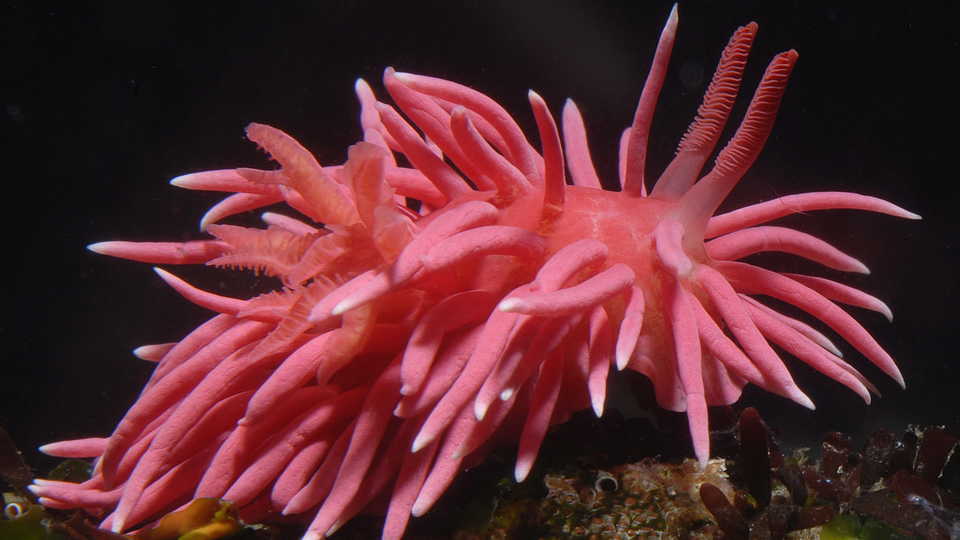Science News
Beautiful Sea Creatures Signify Ocean Warming

Science Today is celebrating Earth Day all week with stories about our beautiful (and changing) planet.
“Okenia rosacea is emblematic of great beauty in our world, and also emblematic of how our world is changing.” The Academy’s Terry Gosliner is talking about the nudibranch (sea slug) species that has popped up in large numbers along our northern California coastline. In the past, these bright pink invertebrates in our area have signified the warming of our coastal waters and, more specifically, El Niño events.
Nudibranchs have become so common in our local tide pools that Gosliner has seen more in one recent low tide than he had seen in his entire lifetime of studying them. They’re normally found much farther south. And while it’s “exciting to see these gorgeous nudibranchs,” he says, “At the same time they set off alarm bells for me.” That’s because these small animals are “suggestive that these warming events are happening more frequently, and are more pronounced, than ever in recorded history,” he explains.
We first reported on this bloom in February, with Gosliner wondering at the time if an El Niño event was on its way. Sure enough, last month, NOAA (the National Ocean and Atmospheric Administration) announced that, although we are experiencing an El Niño event, but it is so weak and is taking place so late in the year that it won’t bring the usual rainstorms Californians are familiar with (and so desperately need).
The lovely pink nudibranchs likely drifted northward as larvae, metamorphosing into adults when triggered by the availability of adult food, Gosliner explains. “The larvae settled out in the warmer Bay Area waters as happy as slugs.”
The presence of these small sea slugs will have very little impact on the local ecosystems, Gosliner says, but it’s what they represent. “The world is changing in accelerated and really exaggerated ways.” And perhaps the warmer waters that are inviting for Okenia rosacea are also keeping the sardines away and wreaking general havoc for marine life along our coast.
Gosliner reports that the nudibranchs “may persist through the summer, but as we get into fall, they’ll fade away.” If they return, will that signify a permanent phenomenon, as opposed to the transitory ones Gosliner has seen in the past? “That’s a really interesting question,” he says. And he will continue to study the colorful creatures in search of an answer.
Image: Gary McDonald